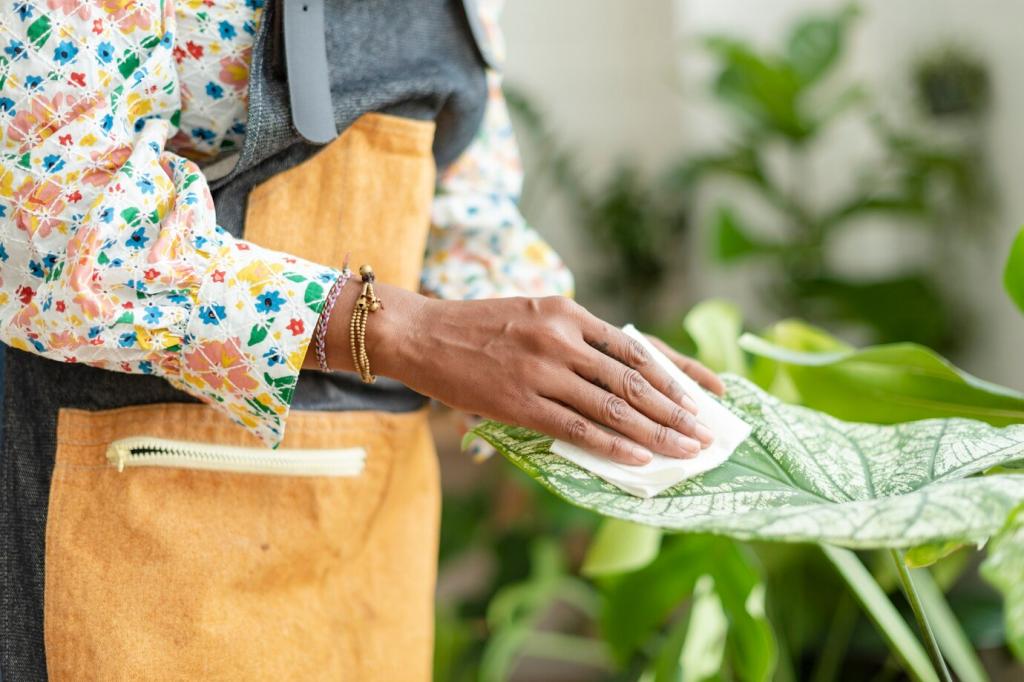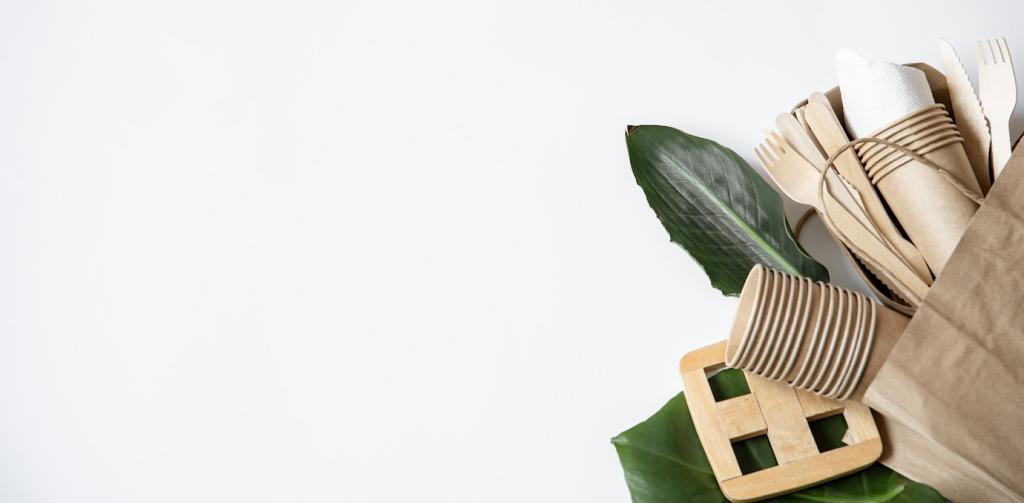
Greener Care for Every Sofa and Seat
Selected theme: Green Cleaning Techniques for Different Furniture Fabrics. Explore smart, low-toxin methods that protect fibers, color, and indoor air—so your favorite chairs and couches look fresh without harsh chemicals.
Know Your Fabric: Fiber Types and Eco Chemistry
Fiber Families and pH Matters
Natural fibers like cotton, linen, and wool respond best to gentle, neutral-to-mild solutions, while some synthetics tolerate slightly more vigor. Match cleaner pH to fiber tolerance, and always handle delicate weaves with patience to keep texture, color, and structure intact.
Manufacturer Codes and Spot Testing
Before any cleaning, check labels for care codes and perform a hidden spot test using a white cloth. A tiny trial prevents color bleed, watermarking, or texture changes, ensuring your green solution is safe for both everyday maintenance and urgent stain rescues.
Your Essential Green Cleaning Kit
Stock distilled water, plant-based castile soap, baking soda, white vinegar, enzymatic cleaner, fine salt, soft brushes, and microfiber cloths. With these simple tools, you can handle most spills calmly, reduce fumes, and encourage a healthier home environment for everyone.
Cotton and Linen: Simple, Plant-Powered Solutions
Castile Soap Cloud for Everyday Grime
Whisk a few drops of plant-based castile soap into warm distilled water until lightly foamy. Dab, never rub, lifting soil gradually with a microfiber cloth. Finish with a distilled-water rinse cloth, then air-dry thoroughly to avoid tide lines and keep fibers smooth.
Baking Soda for Deodorizing and Freshness
Sprinkle a fine layer of baking soda over cushions, wait thirty minutes, then vacuum slowly with a brush attachment. It gently absorbs odors without perfumes, restoring airy comfort. Share your favorite natural deodorizing tricks in the comments and help others breathe easier.
Sunlight, Shade, and Color Care
A short, indirect sun session helps freshen cushions, but avoid prolonged exposure to prevent fading. For colorful linen, dry indoors with ample airflow and rotate cushions regularly. Tell us your rotation routine, and subscribe for monthly fabric-safe care reminders and printable checklists.
Wool and Velvet: Gentle Methods for Luxurious Textures
Wool: Saponins and Patience
Use cool distilled water and a drop of mild, wool-safe soap. Blot carefully to prevent felting or stretching, keeping motion minimal. An elderly armchair in my aunt’s cottage survived decades thanks to slow, careful blotting and light brushing—proof that patience preserves heirlooms.
Velvet: Steam, Lift, and Direction
Hover steam lightly, then lift pile with a soft clothes brush, working in one direction. Avoid soaking the backing, which can distort texture. If a splash appears, blot upward with a white cloth. Share your velvet victories, and subscribe for fabric-specific guides delivered monthly.
A Red Wine Rescue Story
A late-night spill on deep-blue cotton-velvet looked disastrous. We blotted fast, sprinkled fine salt, then dabbed distilled water and a hint of soap. The stain lifted, the pile revived with gentle brushing, and the party resumed—green methods saving the evening gracefully.

Distilled Water and Gentle Agitation
Mist a microfiber cloth with distilled water and a drop of mild soap. Wring well to avoid overwetting, then wipe in small sections. Follow with a damp rinse cloth, then a dry cloth to even out moisture and prevent rings, maintaining that smooth, resilient finish.

Brush, Vacuum, and Fiber Memory
Performance fabrics respond beautifully to routine care. Vacuum weekly with a soft brush to remove dust that dulls color. A light upholstery brush restores nap and smooths faint marks, protecting fabric memory so seats spring back comfortably after everyday use.

Greener Stain Strategies
Tackle fresh stains promptly with blotting and minimal solution. For stubborn spots, try an enzymatic cleaner made with plant-derived enzymes, following label guidance. Report your results in the comments so the community can compare fiber responses and refine eco-safe tactics together.
Start with a dry microfiber wipe to remove fine grit that can scratch. For marks, use a barely damp cloth with distilled water, then dry immediately. Avoid vinegar or heavy oils, which can disrupt finishes. Share your favorite gentle routines to keep seats naturally radiant.
Leather and Faux Leather: Condition, Don’t Coat



